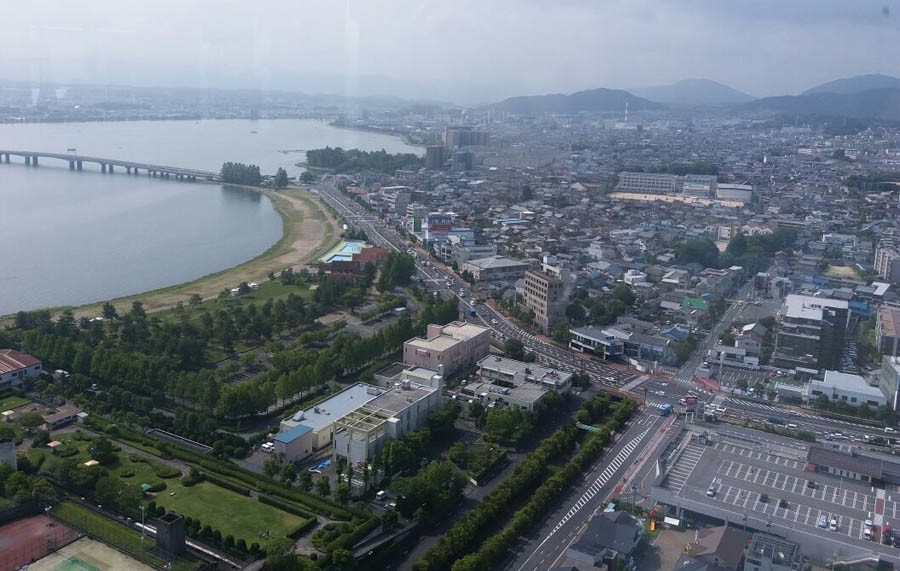
Ten days of the unique Japan experience -- Tokyo, Kyoto and Osaka

Along with its astounding natural charm, what makes Japan so attractive are its quirky innovations, futuristic trains, and a captivating and intriguing culture.
Despite Tokyo being one of the most populated cities in the world, much of the land is still covered with lush green beautiful forests. The Yoyogi Park in Tokyo, spread over 134 acres of land, is evidence of the fact that the government has kept many of the forests intact just for the sake of the environment.
Kyoto too, whose scenic beauty exceeded all other cities I visited with my family during my 10-day long stay in Japan, is surrounded by evergreen mountains on all sides. Away from the former capital’s centre, in the north-east, prominent amongst buildings and houses, is another wonder - Lake Biwa, Japan’s largest freshwater lake. Its clear water is a spectacular view to behold.
Commuting in Japan is quite difficult for a foreigner solely because of the language barriers but if one travels frequently through these trains then it does not remain that big a problem. Japan’s transport system with its vast network of railway lines is highly efficient. It was the first country to introduce the Bullet Train, Shinkansen, which travels at an alarmingly fast pace long distance from one city to another covering vast distances in a matter of minutes. One will find the subway to be a completely different world that exists underground just because of how lively and how bustling it is brimming with shops and people.
We were staying in the Ginza district which is considered to be the heart of Tokyo. It is also one of the main shopping centres with animated streets and bright lights, and the nightlife is truly one of a kind. Tokyo has numerous sightseeing attractions such as the Tokyo Tower (higher than the Eiffel Tower in Paris) whose observatory provides a breathtaking view of the city landscape, and the Rainbow Bridge which is also very much like the Golden Gate Bridge in San Francisco.
It is near the temples, Sensō-ji Buddhist temple in the historic neighbourhood of Asakusa in Tokyo, and the famous Buddhist temple Kiyomizu-dera in Kyoto, that I observed many men and women wearing their traditional dress, kimono. The Kiyomizu-dera is also famous because not a single nail was used in its structure! The path to these temples is lined with many shops and stalls selling souvenirs.
However, as a teenager what particularly caught my attention were little children wearing the kimono, and I ended up taking several pictures with them.
Osaka had a charm of its own. The Osaka Castle, that we visited, restored completely in 1997, is situated over hills, and is visibly a famous landmark in Osaka with appealing architecture. It was built in 1583 as Japan’s most formidable castle. During the cherry blossom bloom, in particular it is a popular tourist spot.
In Osaka, we ran into a lot of dog-lovers walking their dogs. I did not let any dog out of my sight without petting it first, and the owners were delighted to see foreigners getting along with their pets.
In terms of cleanliness and hygiene, Japan has also far exceeded many other countries, we failed to witness any sort of garbage or dirt on any public spaces like roads or train stations. One can see numerous workers and cleaners busy doing their jobs keenly so that not a single speck of dust goes unchecked. Japan’s high-rise buildings and skyscrapers were unbelievably spotless leaving one marvelling at how their windows were kept so free of dust.
The Japanese people also seemed to be very health-conscious as one can rarely catch the sight of people smoking. In parks and on roads, many use bicycles, instead of cars, to get from one place to another which not only shows concern for their own fitness but also the will to keep the atmosphere clean. One can see loads of little children getting on and off, and switching trains without any guardian to supervise them, which testifies to the fact that children can travel on their own safely without any fear.
Japan, an active participant in WWII has now been declared as one of the safest countries in the world.
Another bewildering and astonishing thing I came across were the separate paved pathways in cities specifically constructed for blind people. Although we barely noticed one or two blind people, it is heartwarming to know how the government has been thoughtful and considerate to ensure no one gets left behind.
How the Japanese think about privacy is very intriguing. It is a value that they hold dear. When I was travelling in a bus from Kyoto to Tokyo, the bus surprisingly had curtains around individual passenger seats just to ensure that personal space is well-protected, and does not get invaded. Also, whilst buying books from the bookstore, the books would be wrapped in the same standard covers so that people nearby would not be aware of your reading material.
The Japanese people also managed to amaze me as they proved to be very helpful and friendly to foreigners. Although generally the Japanese people only know a smattering of English, if a tourist asks directions of a local, they try their best to explain through gestures even if it makes little sense to the tourist.
Travelling across Japan’s major cities such as Tokyo, Kyoto and Osaka, I was able to appreciate and learn about the many things that make this country so unique and captivating. It has been one of the best experiences I’ve had and if given the chance I would like to visit it again.